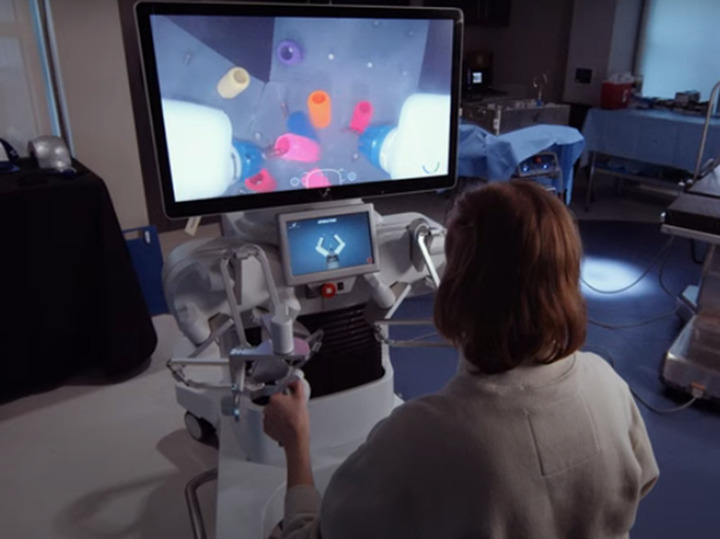Oleg Kotov commented on the “surgical operation” performed remotely on the ISS
[ad_1]
Doctors from Earth controlled the actions of the robot “doctor”
The rubber band was “operated on” on the ISS by American doctors, controlling it from the Earth with the hands of an onboard robot. The experiment is reported by the press service of the University of Nebraska.
The spaceMIRA (Miniaturized In-vivo Robotic Assistant) robot was carried aboard the International Space Station on one of its recent cargo flights in January. This is a compact device, 76 centimeters long, weighing 1 kilogram, equipped with a camera and two “arms” into which various surgical instruments are inserted (depending on the type of operation). MIRA can be used in any compartment of the station where there is an Internet connection. Everything the robot does is transmitted to Earth using a special interface. Thus, doctors on Earth who control the hands see everything as if it were happening in a real operating room.
Recently, specialists from the University of Nebraska decided to test a robot surgeon by simulating an operation to cut body tissue.
The “surgical operation” proceeded as follows. Inside a special experimental cabinet the size of a microwave oven were 10 rubber bands fixed to a metal panel. The task of earthly surgeons was to grab, tension and cut one of the ribbons. The robot had a gripper in its left “hand” and scissors in its right.
The signal delay between the Earth and the station during the operation was 0.5-0.75 seconds. The engineers who created the robot knew this feature and adjusted the control system in advance to compensate for the delay.
Of course, with a real operation there may be more serious communication problems. In case of interruption of communication with the Earth, spaceMIRA is “taught” to think and act independently according to given algorithms. The first robotic operation on board was successful. Its progress was controlled by astronaut Loral O’Hara.

This is the first experiment to conduct operations in space through space telemedicine,” says Oleg Kotov, deputy director for science at the Institute of Medical and Biological Problems of the Russian Academy of Sciences. “If now, in case of serious health problems requiring urgent operations, we urgently lower the astronaut to Earth, then in long-distance flights, which we include flights to the Moon, this will no longer be possible. Therefore, robotic “surgeon hands” may be needed on the space station.
By the way, on Earth such remote surgical operations have already been practiced in many clinics around the world, now it’s the turn of space ones. To carry out such remote manipulations, the crew members on board will only need to immobilize the patient and provide pain relief. Then the work will be done by an earthly surgeon and a robotic complex.
[ad_2]
Source link








